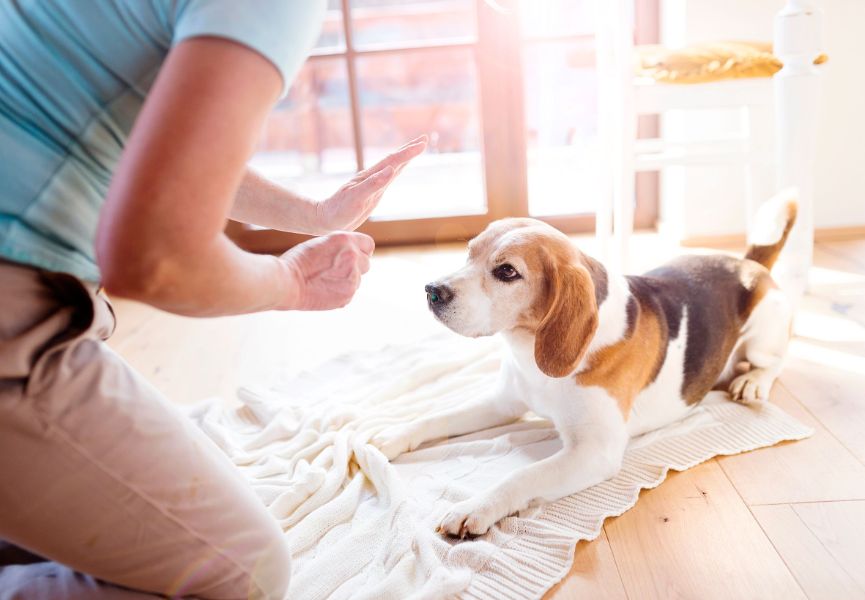Blog
De-Mystify and Simplify: Housetraining Your Pet Can Be Easy

They may not be using the toilet or picking up their own piles in the backyard, but established pets know exactly when and where to go and don’t often deviate from what’s expected. Few newly adopted pets come equipped with these skills, however, and need to be taught the best bathroom practices.
Housetraining your pet may sound like a lot of work, but when it’s approached the right way it’s actually easy – and fun!
Stick to the Routine
Establishing a household routine is critical. When your pet can anticipate that a bathroom break is around the corner they’ll learn to wait for it. If they are uncertain when and where they’ll be able to relieve themselves, you may find more accidents inside the house.
Always start and end the day with a trip to the great outdoors. If you can, offer a trip outside every 2-3 hours until you both find a rhythm. housetraining your pet should include opportunities to pee/poop directly after meals, play time, crate time, waking up, and playing.
All About the Location
Your new pet should be taught where they can go to the bathroom. This process is much easier with positive reinforcement training, meaning that you reward the behavior you want to see them repeat, such as urinating in a specific area of the yard. Praise them with extra enthusiasm and offer a tasty treat to help connect them with the action you approve of.
Please do not scold or punish your new pet if/when they go potty in the wrong spot. This won’t get the result you want and it may make them fear or mistrust you. Simply remove the mess with an enzyme cleaner to reduce the chances of them returning to that area in the future.
Watching Carefully
As you and your pet get to know each other over the first several weeks, you’ll likely pick up certain cues of their body language. If you observe them sniffing around, whining, pacing or squatting, quickly pick them up and take them outside. When they go outside, reward them with affection and praise. In all this chaos it can be easy to forget that prevention is the key to housetraining your pet!
Tools of the Trade
You might need (and be happy to have) certain items when embarking on housetraining. Puppy pads do a great job of attracting pets and provide easy cleanup when they go right on top of it. Placing the pads near the exit can reduce frustration when your puppy just can’t make it out the door in time.
Crate training is essential. Not only does their crate help your pet feel safe, secure, and cozy, but reduces possible messes in the house during the night or when you’re out of the house. Provided they aren’t crated for longer 4-6 hours at a time (or 2-4 hours for younger pets), they are unlikely to go the bathroom inside their crate.
Housetraining Your Pet With Honors
This is a learning opportunity for both you and your pet. Try your best to enjoy every step of the way knowing that your love and encouragement will go a long way toward establishing and reinforcing the bond between you.
If you have further questions or concerns about housetraining your pet, please let us know.
